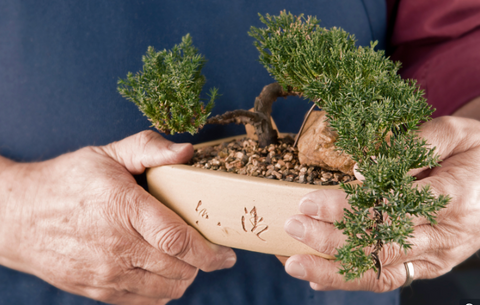One of the most important aspects of maintaining a healthy bonsai tree is proper watering. However, the process of watering a bonsai can be a bit tricky, especially if you're a beginner. In this post, we'll take a look at how to water your bonsai properly, why bottom watering is important, and how to adjust your watering routine for different seasons and species.

1. Understanding the Basics of Bonsai Watering
Before diving into the specifics of watering techniques, it's important to understand the basic principles of bonsai watering. Firstly, it's essential to ensure that the soil in your bonsai pot remains slightly moist at all times. However, overwatering your bonsai can be just as harmful as underwatering it. It's crucial to avoid letting the soil become waterlogged, which can cause root rot and other issues. Therefore do not water your bonsai yet when the soil is still overly wet.
2. Bottom Watering: Why It Matters
When it comes to watering your bonsai tree, bottom watering is a highly effective technique that can help prevent overwatering and provide your tree with the right amount of moisture. To bottom water your bonsai, submerge the entire pot in a tray or basin filled with water, and allow the soil to soak up water from the bottom. This method ensures that the roots of your bonsai are getting the right amount of moisture without drowning the plant.

3. Adapting Your Watering Routine to Different Seasons
The watering needs of your bonsai tree will vary depending on the time of year. During the warmer months of spring and summer, your bonsai will require more frequent watering, due to the higher rates of evaporation and transpiration. In contrast, during the cooler months of fall and winter, your bonsai will require less frequent watering. However, it's still essential to monitor the soil moisture levels regularly.
4. Understanding the Watering Needs of Different Bonsai Species
Different types of bonsai trees have different watering needs. For example, tropical bonsai species require more frequent watering than their temperate counterparts. Similarly, deciduous bonsai trees require less frequent watering during their dormant phases. It's essential to do your research and understand the specific watering requirements of your bonsai tree species.
The most popular indoor bonsai species from our store are generally tropical and should be kept moist all the time. They should be watered 1-2 times a week depends on the size. In the summer much more frequent watering might be necessary.
5. Signs of Overwatering and Underwatering
Finally, it's crucial to be vigilant for signs of overwatering and underwatering. Overwatering can cause your tree's leaves to wilt, and the soil to smell, while underwatering may result in leaf drop and dry, brittle soil. Regularly check the soil moisture levels and the appearance of your bonsai tree to ensure that you're providing it with the right amount of water.
In conclusion, Bonsai care can be a challenging and rewarding hobby for beginners, and watering your tree is one of the most critical aspects of maintaining its health. By understanding the basics of bonsai watering, employing bottom watering techniques, adapting to different seasons, and understanding the specific requirements of your bonsai tree species, you'll be well on your way to providing your bonsai with the care and attention it deserves. Happy watering!
